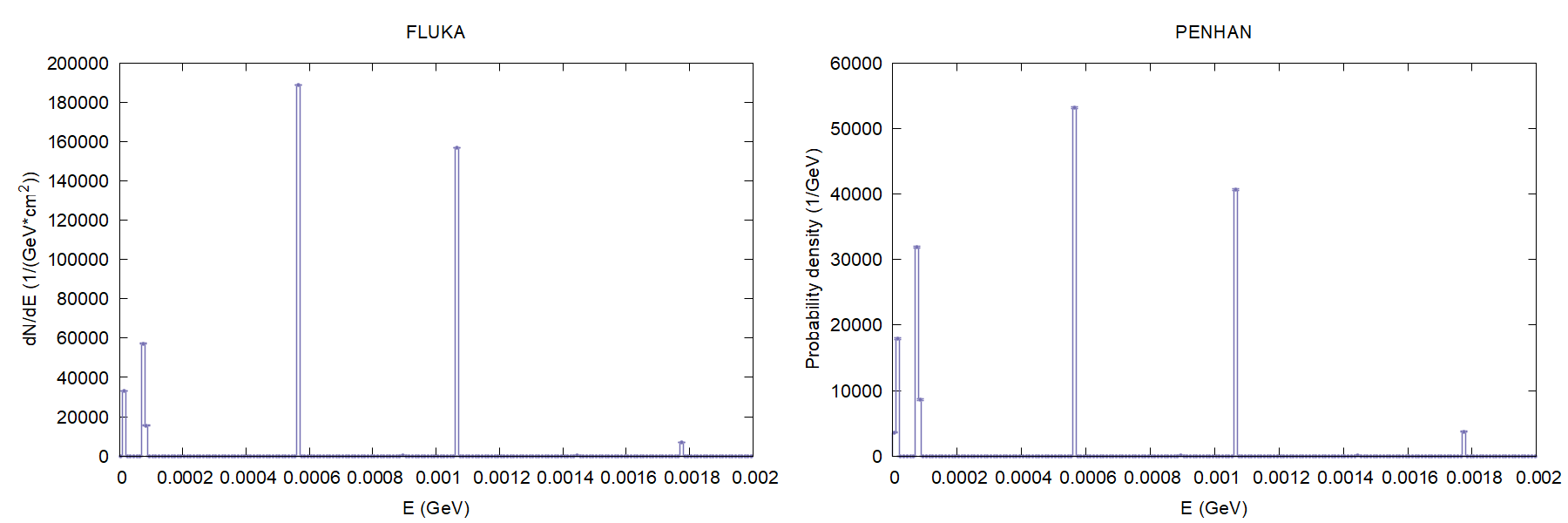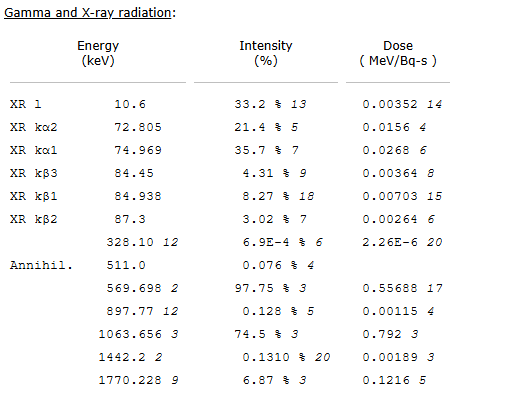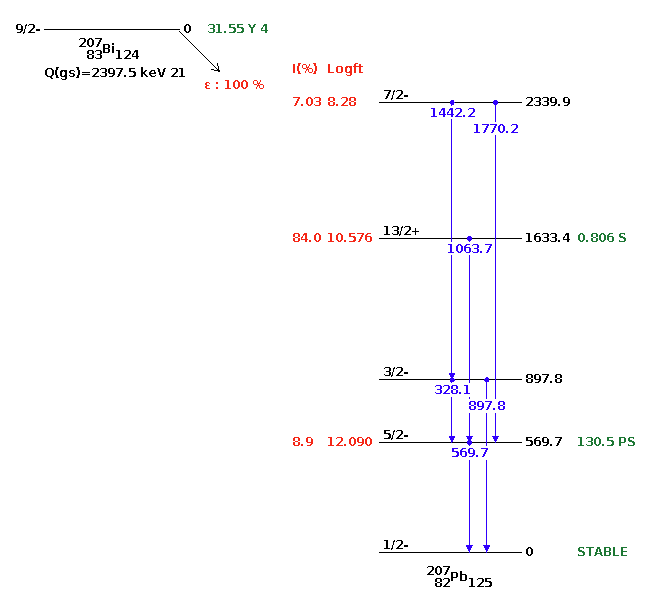Dear FLUKA experts,
I am currently working on radionuclide simulation and analyzing emission spectra generated by FLUKA, with the goal of comparing them to those obtained using another Monte Carlo code (PENHAN, based on the PENELOPE code) for the same radionuclides.
In general, I have found good agreement between the two codes for various radionuclides, with some differences explained by different approaches in each code. However, when analyzing the photon spectrum of Bi-207, I noticed a discrepancy I cannot explain.
To provide context on how I performed the calculations in both codes:
- In FLUKA, I simulated a point source of Bi-207 placed at the center of a void sphere of 1-micron-radius, whose surface acts as a detector of the emission spectra of the source. To account for this detector, I used the USRDBX card (without specifying the detector area, so I understand FLUKA assumes 1 cm^2 area). This gave me the differential fluence dN/dE in units of 1/(GeV*cm^2). If I am interpreting this correctly, multiplying these dN/dE values by the bin width gives the number of particles in each energy bin and, therefore, the energy distribution of particles reaching the detector.
- In PENHAN, I performed a simulation with an equivalent setup, and with a detector that gave me the probability density (in 1/GeV) with the same energy grid. Since in FLUKA we are assuming a detector area of 1 cm^2, the results obtained with PENHAN should be equivalent to those obtained by FLUKA, though with a different normalization factor which is applied in PENHAN. So while the absolute values differ due to this normalization factor, the shape and relative intensities should still be comparable. In fact, this approach yielded consistent results for other radionuclides.
For Bi-207 photon spectra, the graphs obtained were the following:
We observe that the relative intensities of the gamma lines at 569.698 keV and 1063.656 keV (that result from the nuclear de-excitation of the daughter nuclide Pb-207) to the other lines are higher in FLUKA compared to PENHAN.
I have checked the decay data used by both codes. PENHAN relies on the LNHB database (Nuclear Data – Table – Laboratoire National Henri Becquerel), while FLUKA (as far as I understand) uses NuDat database (NuDat 3). The gamma energies and intensities listed in both databases are very similar, as shown in the figures below:
LNHB database:
NuDat databse:
Additionally, we have collected the numerical values obtained by both FLUKA and PENHAN in the table below. For FLUKA, the values were extracted from the _tab.lis file corresponding to the photon detector.
With these values, we calculated the relative intensities of gamma1 and gamma2 with respect to gamma3 (simply by dividing) for the four sources: FLUKA results, PENHAN results, LNHB data, and NuDat data. The results are as follows:
We observe that FLUKA yields higher values than both the databases and PENHAN. Based on this, it seems that FLUKA may be overestimating the 569.698 keV and 1063.656 keV photon intensities for Bi-207.
Is there anything I might be missing in how FLUKA handles this radionuclide decay or in how I have set up the simulation?
For reference, I attached the input file used in FLUKA:
bi_207.inp (2.0 KB)
Thank you very much for your help.
Best regards,
Lidia





